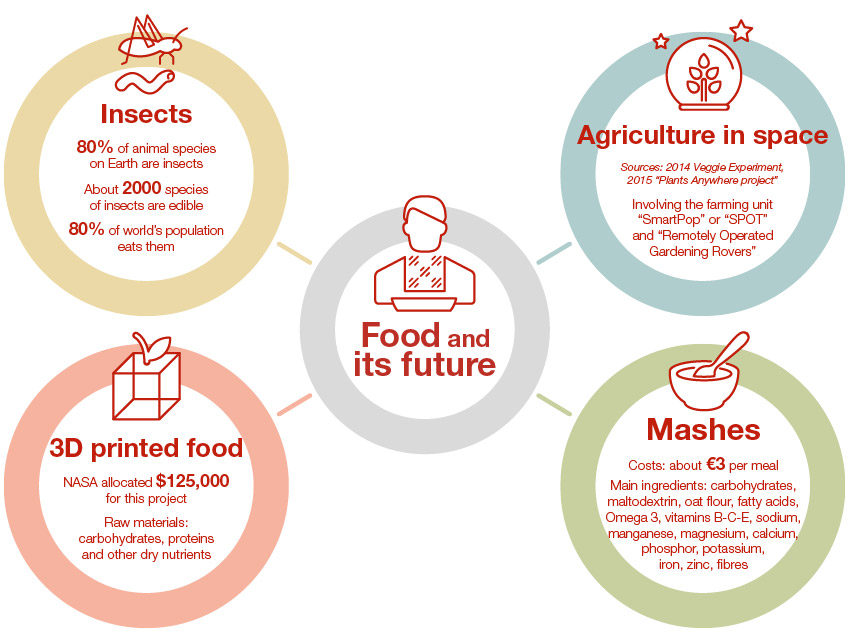30 July 2015
Food and its future
A possible scenario of tomorrow’s nutrition
What will we eat in the future? Considering overpopulation and climate change this is a very relevant question to ask, indeed. One may well call Ger van der Wal, founder of DeliBugs and Insect Europe, a prophet of nutrition. His job is to produce insects and turn them into food, because, in his opinion, "insects are good, nutritious and sustainable."
There is nothing new about it. For a long time, groups of entomologists, especially in the US, have promoted the idea and numerous books, blogs, even cookbooks have been written. In their view, the idea would solve many problems: insects contain proteins, unsaturated fats, vitamins and minerals. Moreover, in some parts of the world – like in Africa or Japan – people already eat insects. In Europe and United States, however, eating insects is still considered a strict taboo, as strong is the distrust of medical institutions, that have to catalogue the production processes and the actual nutritional value of the alleged ‘food of the future’.
Insects are, in fact, part of the novel food category: that means they are considered a form of ‘untraditional food’, which did not exist before 1997. In other words, each country will have to decide for itself whether to allow the eating of insects or not. In the Netherlands and Belgium, special restaurants have already spread across the country. In Italy it is more difficult but, according to Ger van der Wal, legislation will evolve soon: "I predict that it will take at least a couple of years. Then, in about 20 years it is be safe to say that eating insects will become something quite normal in Europe, and finally become 30% of Europeans diet." A first step has been made in these days: October 28 the European Parliament introduced a new regulation to simplify the procedures for authorizing “novel foods” such as worms, larvae, scorpions and spiders. But also mushrooms and algae.
But the big news comes from the pioneering space industry. Long travels require nutritious and easily transportable foods, and one of the found solutions is 3D printing, a project for which NASA has earmarked $ 125,000. Different meals are printed from carbohydrates, proteins and other nutrients in powder, which storage is estimated up to thirty years. Pizza most likely will turn out to be the proof of success or failure.
Another way is the idea of space-agriculture: why bring food from home if you can produce it on site? The Veggie Experiment of 2014 goes in this direction, where a unit capable of growing vegetables was sent to space to ensure the nutritional requirements of the International Space Station crew. But this year the project Plants Anywhere: Growing Plants in Habitat Free Spaces is on everyone’s lips. A team of University of Colorado graduate students developed a food gardening system for deep space, based on two key components: a device for growing plants, and a robotic gardener that takes care of them.

These are all breathtaking scenarios. Among them, however, the most discussed of all remains the "end of the food", proposed by products such as Soylent and its European equivalent Joylent, allowing to live on basic nutrients and to save time and money without having to sacrifice a healthy diet. Will powder meals be able to satiate body and soul of mankind in the foreseeable future? It is for posterity to judge.
